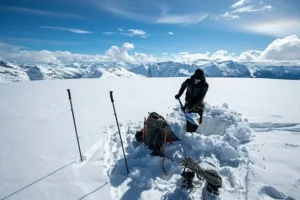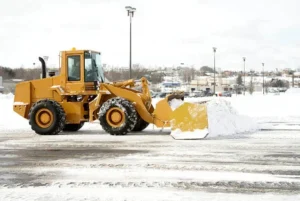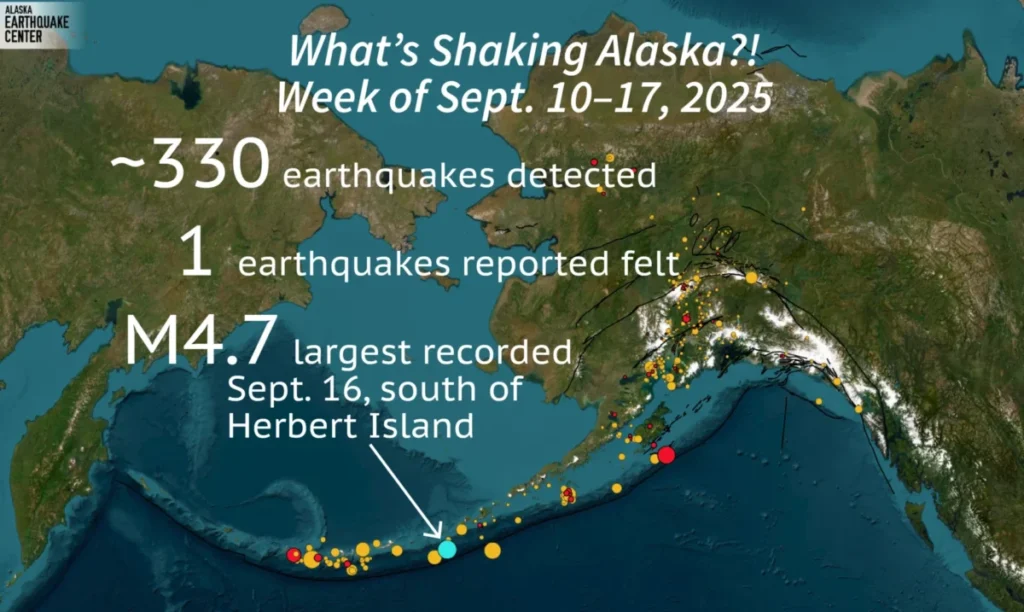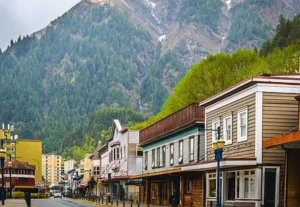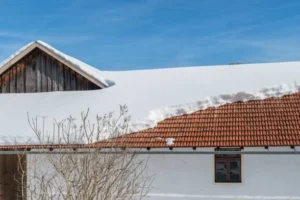We’re recording on site today from the southeast side of Kodiak Island. This is Michael West.
I’m here with graduate student Cade Quigley installing a small cluster of seismometers, often called an array.
We’re looking out over the Pacific Ocean, where many of Alaska’s largest earthquakes originate. It’s hard to assess these earthquakes quickly because they start far away from our land-based monitoring network. But small arrays of sensors can operate much like an antenna to measure the distance and direction to earthquakes just moments after they start.
No matter how advanced our techniques are, however, most seismology begins the same way, digging a hole in the ground to bury a seismometer.
“Cade, what do you look for in a good instrument location?”
“Well, bedrock is great. If I can’t find that, I’ll bury the sensor in firm soil. I try to stay away from vegetation that shakes in the wind,” Cade said.
The point is to be tightly anchored to the ground so that the sensor well records vibrations from the earthquake. That’s the information we use to determine the size of the earthquake and the style of rupture.
You can learn more about ongoing projects and earthquake instrumentation at earthquake.alaska.edu.

